Tortorella is an award-winning swimming pool designer and builder, creating stunning swimming pools that are as functional as they are beautiful. Their exceptional attention to detail and luxury craftsmanship makes us the preferred choice for swimming pool builders in the Hamptons.
Together at Tortorella, we create a more inspired backyard oasis.
For over 40 years the Tortorella Group has been one of the most trusted luxury swimming pool builders and swimming pool service providers in the Hamptons, NY. With 4 divisions of excellence, we specialize in the areas of pool design & construction, pool maintenance, heating & gas, and bulk chemical delivery for both residential and commercial use.
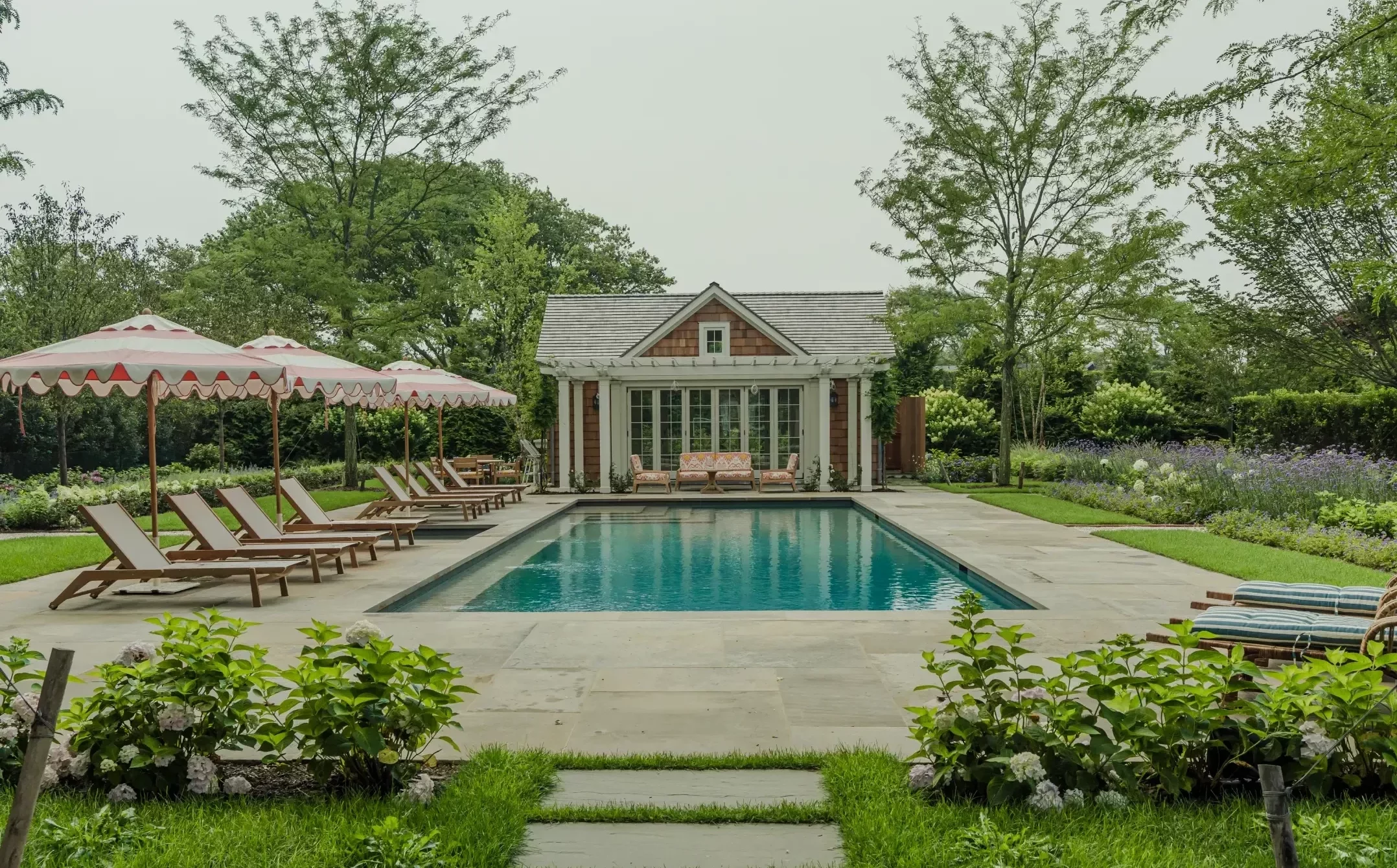
With a commitment to deliver exceptional quality, our team of experienced pool designers, builders, and technicians is known to provide our clients with the highest level of service and craftsmanship, ensuring that every project we undertake is completed to the highest standards and maintained for life. Serving Long Island, and the Greater NY area, Tortorella Group is truly a full-service pool company.
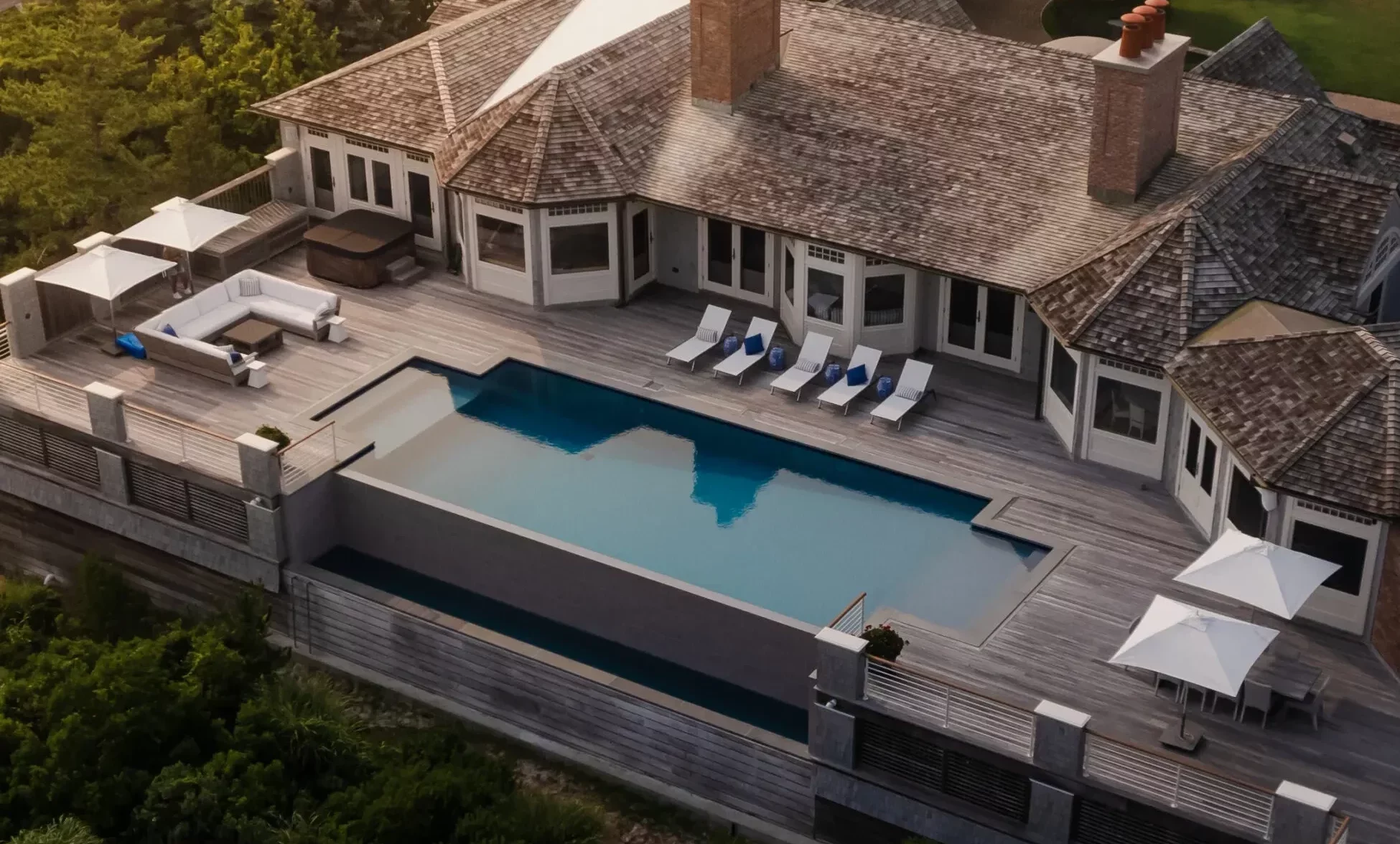
Our team of creative pool designers specializes in making outdoor living dreams a reality.
Trusted to design unique water features for some of the most beautiful luxury homes in the Hamptons, NY we believe that a luxury pool is more than just a place to swim – it’s a statement of style and sophistication. That’s why we work closely with our clients to create custom pool designs that reflect their unique tastes and preferences. Whether you’re looking for a sleek and modern pool or a more traditional design, we have the expertise and creativity to bring your vision to life.
The first step in the process begins with a consultation with one of our experienced pool designers, during which we will discuss your ideas and goals for your new pool. We will take into account your budget, the size and shape of your property, and any other factors that may impact the design. From there, our team will create a detailed plan that includes 3D renderings and a comprehensive list of materials and features that will make your pool uniquely yours.
Luxury pools with the finest materials and finishes.
Once the design is finalized, our experienced team of pool builders will get to work bringing your vision to life. We use only the highest quality materials and equipment and add luxury finishes to each project to make it stand out above the rest.
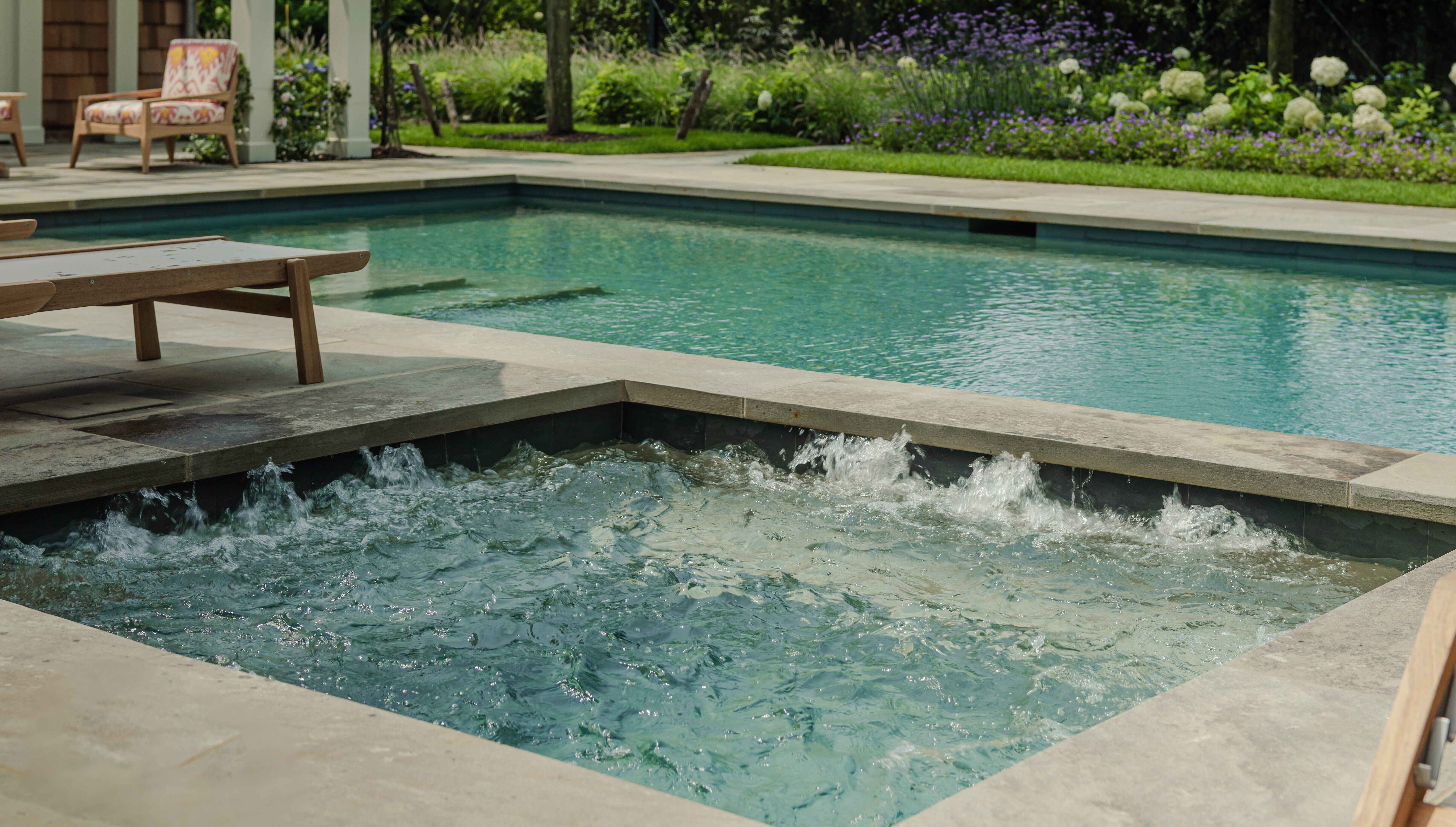
If you are looking for something uniquely yours, look no further, as we pride ourselves on being the premier custom pool builders of Long Island. We use only the finest materials, with expert craftsmanship and exceptional finishes. For more inspiration on designing and building your own custom pool please visit our portfolio page where you can peruse some of the finest outdoor living spaces that our team of experienced custom pool builders has brought to life for our happy clients.
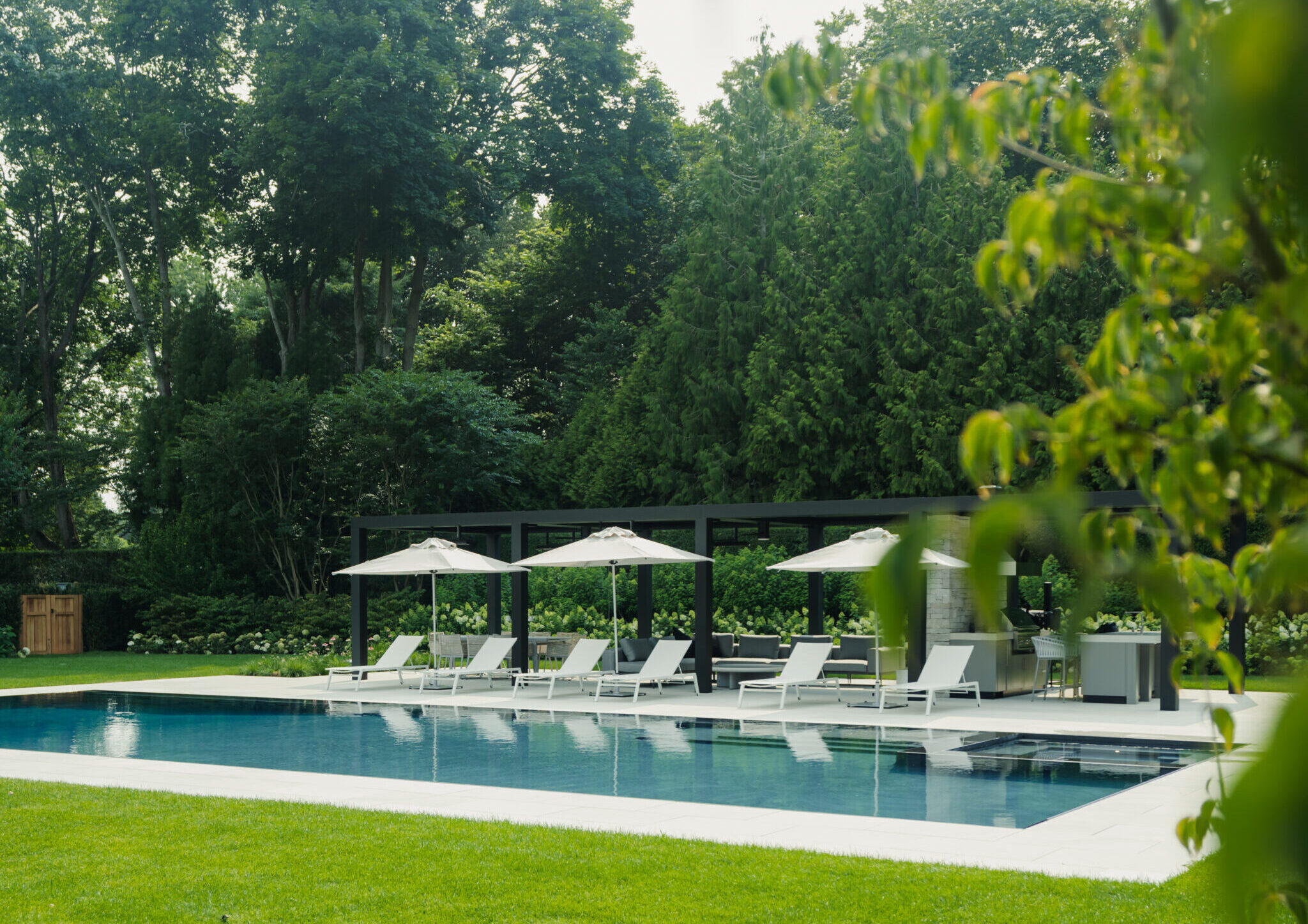
Customize your ideal outdoor living space with our premier pool designers.
As a comprehensive pool company, we offer more than just pool design and construction. Our team can help enhance your outdoor living space, by adding custom water features and spas. We can also offer suggestions and help you partner with highly regarded providers of everything from showstopping fire pits to outdoor kitchens and seating areas. These partners combined with our team of pool designers and pool builders, can create a complete outdoor oasis that is perfect for entertaining or relaxing with family and friends. While our pools are built to last, we also know that regular pool maintenance will keep your prized summer showpiece as good as new.
That is why we also offer superior ongoing pool maintenance and repair services to our clients, as well as propane and bulk chemical delivery for our residential and commercial clients. Rest assured that our pool maintenance team goes the extra mile with twice-weekly service visits to ensure your pool and outdoor living space look and function at their best.
Tortorella Group is a premier pool designer, pool builder, and pool maintenance service provider.
Our team of pool designers, builders, and technicians is committed to providing our clients with exceptional service and quality craftsmanship. We understand that a pool is a significant investment, and we take pride in delivering results that exceed our clients expectations.
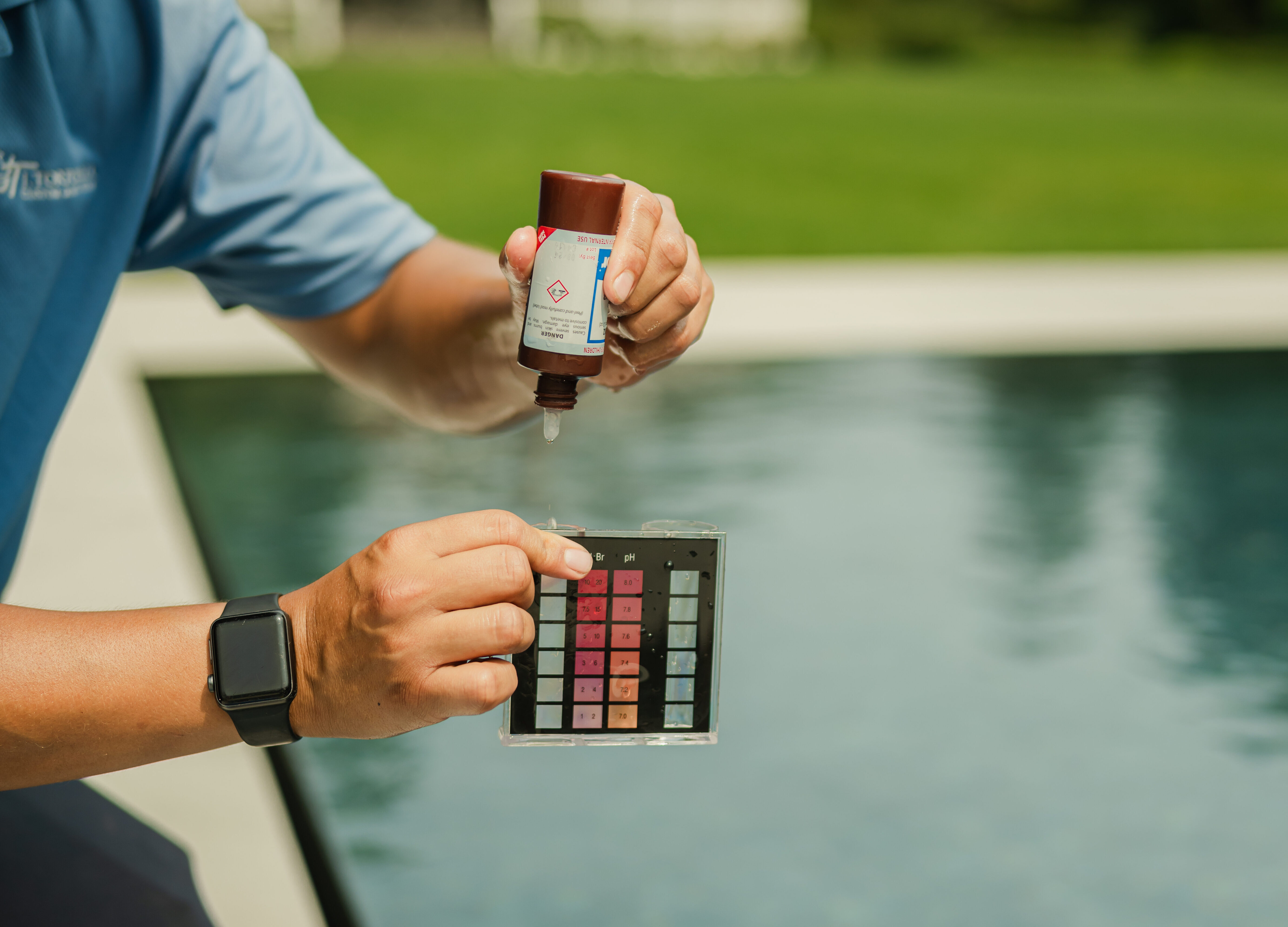
Whether you are looking to create a private retreat in your backyard or a stunning centerpiece for your commercial property, we have the expertise and creativity to bring your vision to life. If you’re ready to take the first step toward creating your dream pool and outdoor living space, we invite you to contact our pool designers today to schedule a consultation. Our team of experts will work with you every step of the way to ensure that your project is a success.
We’d love to hear from you.
At Tortorella Pools, our clients’ satisfaction is our top priority, so we want to do all we can to make it fast and easy for you to for you to get in touch with us, every step of the way.
To contact us, simply complete the form below.




